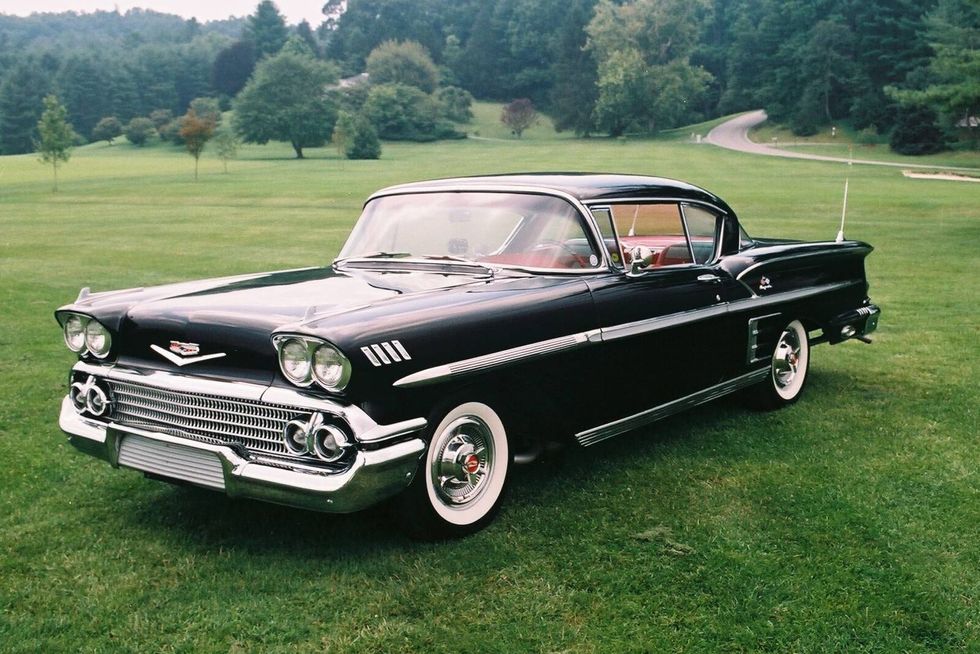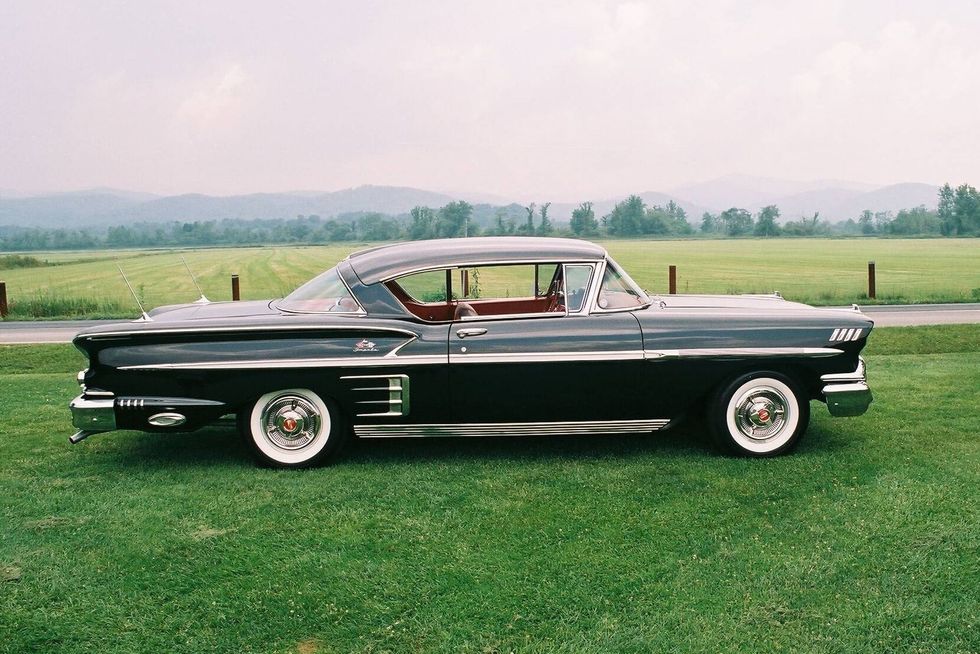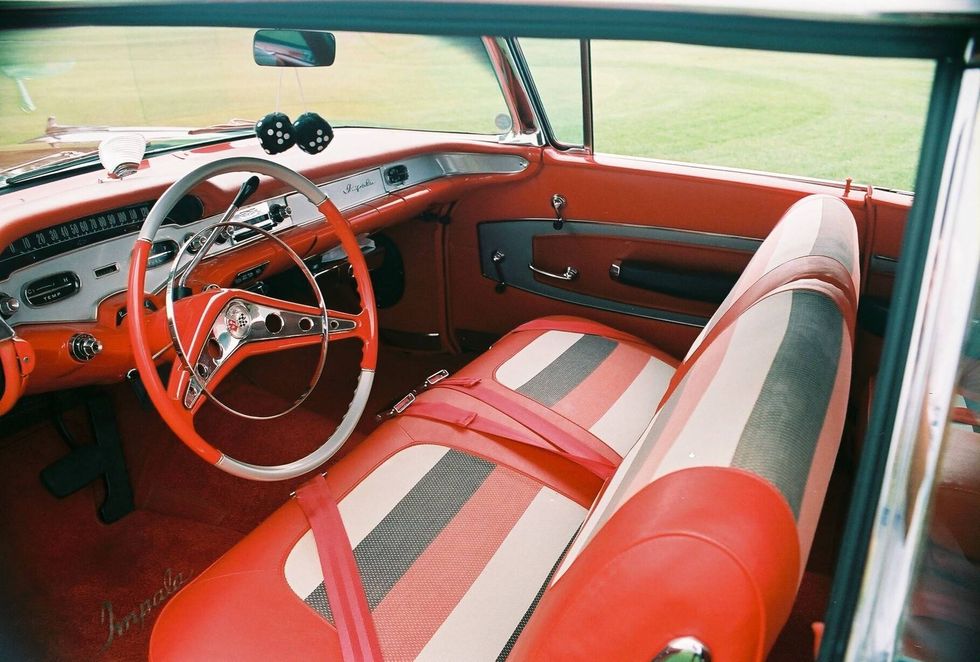Terex 33-19 Titan
The world's largest truck remains impressive almost 40 years later
09/23/2018


If superlatives hadn't existed, they would need to have been invented for the Terex Titan. Calling it the largest, heaviest, most powerful and a host of other extremes would still only scratch the surface on describing the enormity of what might otherwise be called simply a big truck.
Built by General Motors of Canada when heavy-equipment manufacturer Terex was a GM subsidiary, the 33-19 Titan was a one-off prototype made on a scale that simply dwarfed all previous trucks. Initially rated at a 350-ton payload capacity, it was regularly used to haul up to 360 tons in the field. At 66 feet long, 22.6 feet tall (56 feet when the dumper was fully raised) and weighing 256 tons empty, it was every bit as big as a house--if that house were six stories tall! Filled with 360 tons of ore, its gross weight measured an astounding 1,229,500 pounds.
A 10,343-cu.in., 3,300hp, 16-cylinder, two-stroke diesel locomotive engine, made by GM's Electro-Motive Division, powered the Titan. It featured four exhaust valves per cylinder, 10 main bearings, a 45-degree vee angle, intercooled turbocharging and weighed 36,425 pounds. Two door-sized radiators, each with over 5,000 square inches of surface area, contained 258 gallons of coolant. Crankcase capacity was a full 333 gallons--not quarts--of oil. Fuel capacity was 1,560 gallons, which was probably a good thing, since the Titan consumed a whopping 5 gallons to the mile. That's GPM, not MPG.
Just like a modern diesel-electric locomotive, the Titan's engine fed a generator that in turn powered electric motors at each of the four rear wheel pairs. With the electric motors producing maximum torque even from their lowest RPM, it was exactly the sort of force required to get a million-pound dump truck moving on its 12-foot tires, often over rocky, barren terrain.
Stopping that much mass is another matter entirely. But electric motors can work in both directions, so that regenerative braking, which was used in most situations, particularly on downhill grades, could generate power to the effect of 5,400hp. Now, that's brake horsepower! Additional stopping power came from more conventional drum brakes, but of somewhat galactic proportions with over 7,820-sq.in. of contact area and actuated by air over oil pressure.
When seated in the second-story cabin, the driver had a view from nearly 20 feet in the air. Contemporary reports stated that the vehicle was easy to drive and surprisingly agile, but with 10-wheel steering, it should have been.
When completed in 1974, the Terex Titan was slated for production at a cool $1.5 million dollars apiece, or well over $6 million in today's dollars. Although just a prototype, the Titan was pressed into service by Kaiser Steel at its Eagle Mountain, California, iron mine. In 1978, Kaiser moved the Titan to Sparwood, British Columbia (disassembled and transported by rail, no less), where it remained in service until 1991.
Today, the retired truck, minus the engine, remains in Sparwood where it is on public display as the biggest tourist attraction in the mining community. Other trucks, starting in the late 1990s, have since surpassed the Titan's payload capacity, but not yet its size.
For 1958, all-new styling at every General Motors passenger-car division ushered in big changes, just as the corporation was celebrating its 50th anniversary. It was also the final year with Harley Earl at the helm of GM design. Though the new models were longer and lower in proportion than in previous years, Earl’s signature use of excessive chrome remained unabated. That brightwork continued a trend that had dominated automotive design throughout the Fifties. For 1958, it worked seamlessly with those new designs that presented a broad departure from previous years.
Currently listed on Hemmings Auctions are a pair of faithfully restored hardtop coupes from the GM catalog from that momentous year. With wide chrome grilles surrounding four headlamps and copious brightwork including side trim the length of the body, this 1958 Chevrolet Impala Sport Coupe and 1958 Pontiac Bonneville Sport Coupe both handsomely display the heavily Earl-influenced styling that made headlines for GM.

While GM made general announcements and events around its 50th anniversary for 1958, only Pontiac incorporated the occasion into its advertising. It mattered little that the first Pontiac rolled off the assembly line in 1926 as sub-brand of Oakland. Laid out in large letters in its brochure, Pontiac’s advertising theme for 1958 carried the tagline “The boldest advance in fifty years,” also declaring “A new kind of cars is born!” Previously introduced as a well-optioned convertible version of the Star Chief in 1957, the standalone Bonneville arrived for 1958.
Promising “the first true union of sport car action with town car luxury,” the Bonneville was only produced as a pillarless hardtop Sport Coupe or a drop-top Sport Convertible for 1958. As “a modern ultimate for the man who loves cars…this steel-muscled road machine,” the Bonneville featured a 370-cu.in. V8 engine with a four-barrel carburetor and 10:1 compression as standard equipment. An optional Tri-Power setup with triple two-barrel carburetors was given the “Tempest 395” moniker for its 395 lb-ft torque rating.

As the late 1950s was peak Jet Age, aeronautical and rocket themes pervade the details of the Bonneville. The leading edge of the scalloped rear quarter panels featured a very rocket-like piece of chrome trim that extended to a point at the front of the car. On top of each front fender, just before the headlamps, sat additional chrome-plated pieces that resembled delta-wing jets with appendages that lead into creases atop the fenders like contrails from jet engines.
Finished in Burma Green with Calypso Green accents, this 1958 Bonneville Sport Coupe, one of 9,144 produced, appears to have been restored some years ago, with a fit and finish that looks to be holding up. It is equipped with the Tri-Power 370 and a four-speed Super Hydra-Matic transmission. It is additionally fitted with power windows and power brakes, along with the rare Trans-Portable radio unit that can be removed and used as a portable radio with its built-in speaker and ability to run off batteries. The seller notes no problems with the drivetrain and asserts that the transmission shifts well.


Chevrolet didn’t revel in the golden jubilee news that Pontiac touted, but its advertising in 1958 suggested that its redesigned models were “Almost too new to be true!” The ad copy also promised that “You’ll like being looked at in your beautiful ’58 Chevrolet.” Longer, lower and wider than the famous “Tri-Five” models that preceded it, the Chevrolet models somewhat mirrored what was going on at Pontiac, but with a rear-end treatment that seemed to show the previous year’s tall tailfins flopped over somewhat. In magazines ads, the words accompanying the first-year Impala Sport Coupe suggested “This sleek styles-setter promises action, gaiety, glamor—and it keeps its promises beautifully.”
Like the Bonneville nameplate, the first Chevrolet to wear the Impala badge arrived in 1958. Chevy also introduced its first big-block V8, the so-called “W” engine. For 1958, Chevrolet dubbed this 348-cu.in. engine the Turbo-Thrust V8 when equipped with a four-barrel carburetor and Super Turbo-Thrust when fitted with Tri-Power triple carburetion. Though it lacked the aviation/space themes of the Bonneville’s styling, the similarly proportioned Impala was also festooned with plenty of brightwork, from the wide grille to side spears that ran nearly from the taillights to the headlamps. Pound-for-pound, the massive wraparound bumpers probably contained the highest amount of chrome on the car.

Finished in Onyx Black with a bold Rio Red-dominated interior, this 1958 Chevrolet Impala Sport Coupe now on Hemmings Auctions features a long-term restoration that spanned the 1990s. Completed in 2001, it appears to be holding up well. The photos of the very clean undercarriage that accompany the listing tell a story that the car has been taken care since that redo. This example is fitted with the four-barrel 348 that was rated at 250 horsepower when new. Power reaches the rear axle via a two-speed Powerglide automatic transmission.
GM made some distinct design changes for 1958. With plenty of models across five passenger-car divisions, we are fortunate to have options in the collector car hobby when it comes to these chrome-laden machines. Which of these ’58 hardtop coupes would you like to cruise in?
Head on over to Hemmings Auctions to take a look and let us know.
You know when Ryan Brutt from the YouTube channel Auto Archaeology posts a new barn find video, it’s bound to be good. He’s been traveling around the country for over a decade documenting unique barn and garage finds, especially Mopars and other classic muscle cars. This 1969 Dodge Charger R/T is no exception, though he admittedly found it first on Facebook Marketplace, not his usual way of locating cool barn find cars.
The Dodge Charger in question was reportedly stored away for 30 years until recently. “Not my usual way to cool cars,” Brutt writes, adding, “This garage find has been sitting in this garage we think for 30 years. At least the neighbor who had lived there for 30 years didn't even know the car was in there.”
Under the decades of dust, it still sports the factory F5 Medium Green Poly paint and was originally equipped with a vinyl roof. Granted, the body has seen better days, and the muscle car is clearly in “barn find condition.”
1969 was the second year for the Charger R/T model. It came standard with the 440 cubic-inch (7.2-liter) Magnum, or an optional 426 cubic-inch (7.0-liter) Hemi. This example houses the 7.2-liter V8 under the hood, factory rated for 375 horsepower and 480 lb-ft of torque. It’s paired with an automatic gearbox.
1969 Charger R/T Rescued from Garage after 30 years!youtu.be
In a second video, Brutt shares the satisfaction of watching the dirt-caked Challenger receive its first wash with its new owner. Here’s what it looks like to have 30 years of grime washed away:
1969 Charger R/T Garage Find First Wash in 30 Years!youtu.be
In 1969, Chrysler built 69,142 Chargers. Of that number, 20,100 were R/Ts, according to the Standard Catalog of Chrysler 1914-2000. When the 1969 Dodge Charger R/T was first released, its original MSRP was $3,592. According to classic.com, the average used price of a 1969 Dodge Charger R/T like the one found here is $106,278, with the highest sale currently maxing out at $275,000. As of this writing, there are nearly a dozen 1969 Dodge Charger models for sale on Hemmings Marketplace.